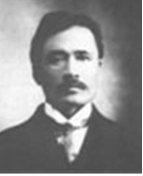Participation in the Donghak Peasant Revolution
Moon Yang-mok (June 7, 1869 – December 25, 1940) was born in Seosan, Chungcheongnam-do, and was an intellectual with an early awareness of anti-feudal and anti-foreign influences. When the Donghak Peasant Revolution broke out in 1894, he joined the peasant army at the age of 25 and actively participated. However, when the revolution failed, he faced the threat of arrest. He narrowly escaped and went into exile.
In 1903, he worked as a Seodang (traditional Korean village school) teacher in Incheon, fostering national consciousness. As Japan’s aggression towards Korea became more blatant, he grew increasingly enraged and sought a more direct path toward national restoration.
In 1905, disguising himself as a laborer for a Hawaiian sugar plantation, he went into exile in the United States. A year later, he moved to San Francisco, where he established himself as a leader in the early Korean-American community and fully committed to the independence movement. In March 1907, along with Jang Gyeong and Baek Il-kyu, he founded the Daedong Bogukhoe (Great Unity Patriotic Association) with the goal of restoring Korea’s sovereignty. In October of the same year, he was elected as its central chairman. Additionally, he served as the president and publisher of Daedong Gongbo, the association’s official newspaper, striving to instill a sense of independence among Koreans both at home and abroad.
Protest Against Stevens and Support for Jang In-hwan & Jeon Myeong-un’s Assassination Attempt
In March 1908, Durham White Stevens, a pro-Japanese diplomatic advisor to the Korean Empire, held a press conference in San Francisco, justifying Japan’s invasion of Korea with outrageous remarks. In response, the Daedong Bogukhoe joined forces with the Korean National Association (Gongnip Hyeophoe), a Korean nationalist organization in the United States, to hold a joint meeting and discuss countermeasures.
Moon Yang-mok was selected as one of the four Korean representatives and personally confronted Stevens, demanding that he retract his statements. When Stevens refused, Moon assaulted him in the lobby of the Fairmont Hotel in San Francisco in a forceful protest.
The next day, on March 23, 1908, Jeon Myeong-un and Jang In-hwan carried out an assassination attempt on Stevens. Immediately, Moon organized a support committee for the two assailants, taking charge of raising funds for their legal defense and hiring lawyers. He framed the trial not as an individual crime but as a “trial for independence,” using the event to publicize Korea’s struggle for sovereignty and Japan’s imperialist atrocities to the American public and the international community.
Publication of Independent Spirit and Universal Military Conscription
In July 1908, he actively supported the Patriotic Comrades Conference, hosted by Park Yong-man in Denver, Colorado, to discuss the establishment of a Korean military school and the unification of Korean-American organizations. In 1909, when Park Yong-man founded the Korean Military School in Nebraska, Moon encouraged students to enroll, strongly supporting armed resistance against Japanese rule through officer training.
In 1910, he established Daedong Shinseogwan, a publishing house in Los Angeles, dedicated to producing literature related to the independence movement. That same year, he published Syngman Rhee’s Independent Spirit and Park Yong-man’s Universal Military Conscription to raise national consciousness.
Leadership in the Korean National Association and Independence Advocacy
In February 1911, Moon was elected as the president of the Korean National Association and actively promoted military training initiatives. He contributed to expanding independence movement bases overseas by establishing regional branches of the Korean National Association in Siberia and Manchuria.
In 1912, he was appointed editor-in-chief of Shinhan Minbo and continued publishing books supporting the independence struggle, including Park Yong-man’s Military Handbook (Gunin Suji).
When the Paris Peace Conference was held in 1919, Moon participated as a representative of the Korean National Association, working to bring international attention to Korea’s independence cause.
Legacy and Recognition
Moon Yang-mok passed away on December 25, 1940, at the age of 71, before witnessing Korea’s independence. His eldest son, Henry Moon, became a prominent figure as the Chair of the Department of Pathology at the University of California, Berkeley, elevating the status of second-generation Korean-Americans.
His contributions were officially recognized by the Korean government, and in 1995, he was posthumously awarded the Order of Merit for National Foundation (Independence Medal). In 2004, he was honored as the Independence Activist of the Month by the Korean Ministry of Patriots and Veterans Affairs. Additionally, in 2005, Choi Jae-hak published a biography titled The Life of Independence Activist Woo-un Moon Yang-mok, further highlighting his contributions to Korea’s independence movement.

Leave a Reply